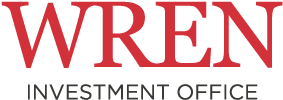Clarity. Insight. Control. Success
What is a Wealth Enterprise?
Families who successfully sustain their wealth across multiple generations – that is, enjoy, grow and ensure it benefits family members – manage the family wealth as they would a well-run company – a wealth enterprise. The professionals at our firm have a lot of experience working with financially successful families. These successful families beat the challenging odds of multi-generational wealth transfer by managing their family’s wealth as a professional endeavour, tapping into the same processes and best practices used to create the wealth in the first place.
Families that successfully manage and sustain their wealth employ the best practices of a wealth enterprise, ensuring the “business of the family” is functional, well managed and designed to bridge the generations.
Components of a family’s wealth enterprise
There are three primary components of a family’s wealth enterprise:
- Strategy, Structure & Governance;
- Wealth Management
- A Network of Providers.
These components must be designed and managed to function together, with an awareness of how a decision about one component will impact the others. The family is the centre of the wealth enterprise, and each component is designed to serve their objectives and needs.
Strategy, Structure & Governance
As with any other enterprise, the most critical component of a family’s wealth enterprise is Strategy, Structure & Governance. Critical activities within this component include:
- Thinking about the wealth of the family as a “business,” beginning with an extensive mapping of all the components: members, assets, liabilities and legal structures. As with any business, a wealth enterprise should have a robust set of financial statements.
- Establishing a mission and strategy statement for the enterprise. For example, what is the family looking to accomplish both in the near term and also longer term? What are the qualitative and quantitative objectives the family would like to prioritise? What does the family see as the purpose of their wealth? Creating a mission and strategy statement to act as a base line for all decision making ensures everyone – both family members and service providers – are working in tandem to fulfil the enterprise’s ultimate objectives.
- Clearly defining a decision-making framework and roles for family members to ensure clear accountability in the enterprise. For example, who will lead the enterprise? What other roles are involved in the enterprise? What roles will non-family members occupy? The goal of this exercise is to define all key stakeholders and their roles in managing the enterprise along with their authority to ensure transparency and clarity around both.
- Creating a framework for family decision-making. For example, will the family have a family board of directors? If so, how often will they meet? How many members should be included? ie: Who will oversee the decision making processes and procedures?
- Planning and preparing for leadership succession, including succession planning, education and empowerment for family members.
Wealth management
The second component of a wealth enterprise is Wealth Management. There are a myriad of activities families must undertake around their wealth enterprise once the values and mission are established.
These activities include:
- Ensuring the wealth enterprise is managed in accordance with its established values, strategy, mission, and governance structure
- Investment-related action such as asset allocation, portfolio construction, manager and investment selection, and performance and risk management
- Financial and estate planning; and
- Financial administration including expense management, preparation of financial statements, ensuring adequate cash flow, tax and other compliance, and ensuring accurate and comprehensive reporting.
While families have many choices in how and with whom they execute their wealth management activities, those activities must be overseen to be certain they fall within the overall purpose and strategy of the wealth enterprise. Wealth management decisions also must be evaluated through the lens of how they impact other aspects of the family’s wealth. This coordination and integration of wealth management activities is essential to effective wealth enterprise management.
Network of Providers
The final component of a family’s wealth enterprise is the network of providers working with the family to execute all of their wealth management activities. This network can be far-reaching and complex – the average wealthy family uses more than 20 providers. It is imperative to be sure that these providers work in tandem, and that each understands the strategic objective and mission of the family’s wealth enterprise and their specific role in it. Ensuring each provider is working towards the best interests of the family is vital. Managing a complex network of providers can be a significant undertaking, requiring significant knowledge of the function each provider performs for the enterprise.
How Wren can help
We are a multi-family investment office acting for a small number of very wealthy individuals, families and family offices who have entrusted us to manage and design a plan for their wealth.
To help achieve enduring generational success, we work alongside our clients, often acting as their outsourced CEO – We believe in helping them define a clear objective and purpose of the wealth, putting in place appropriate professional management and setting out a strategic plan on how to achieve these goals. We will provide them with the tools needed to establish, organise, execute and manage the family’s wealth enterprise in the way they feel benefits them the most.



